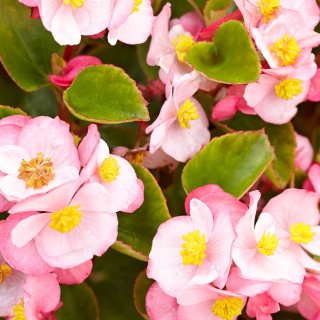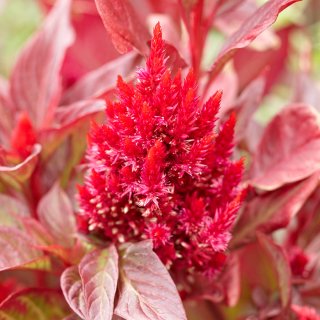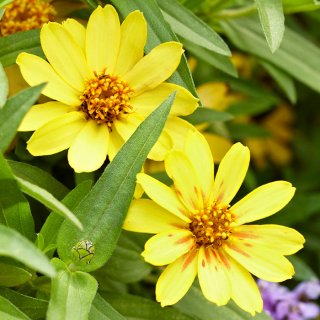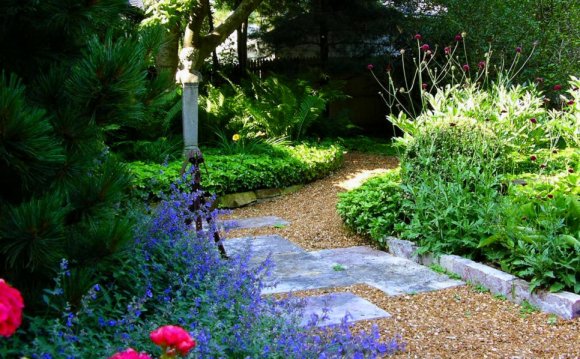
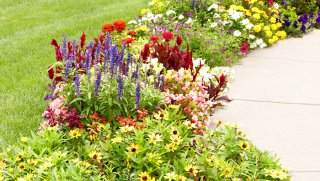 This winding walkway is lined with long-blooming annuals that will turn heads all season long. For visual impact, flowers are grouped informally in clumps and ribbons. This also keeps the garden from looking scattershot and chaotic.
This winding walkway is lined with long-blooming annuals that will turn heads all season long. For visual impact, flowers are grouped informally in clumps and ribbons. This also keeps the garden from looking scattershot and chaotic.
Maintenance is simple: Add a slow-release fertilizer when planting, irrigate if rain is lacking, and remove spent flowers for neatness. That’s really all that’s needed for a welcoming garden that will last until frost
Good to Know: After the bed has been planted, mulch with a 1-inch layer of bagged compost to cut down on weeds and to keep the soil from baking and cracking. Tender annuals will have an easier time filling in around the soft compost rather than hard wood chips. The compost will feed plants, too.
PLANT LIST
- Marigold (Tagetes spp.), annual
- Celosia (Celosia argentea), annual
- Mealycup sage (Salvia farinacea), Zones 8-11 or annual
- Petunia, annual
- Moss verbena (Verbena tenuisecta), Zones 8-11 or annual
- Angelonia, Zones 9-10 or annual
- Bedding zinnia (Zinnia haageana), annual
- Texas sage (Salvia coccinea), annual
- Wax begonia, annual
- Upright zinnia (Zinnia elegans), annual
Marigolds are a mainstay in many annual flowerbeds for good reason. They’re simple to grow and won’t complain if you miss a day of watering. In addition to yellow (shown) there are marigolds with cream white, orange, and bicolored flowers. Keep them deadheaded for repeat blooming through a hard frost.
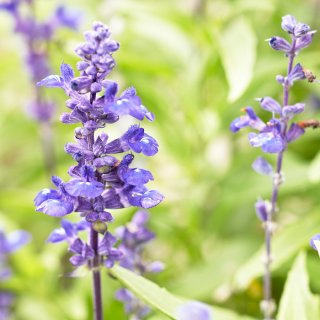 Salvia is another workhorse in the garden. One of the most popular species is mealycup sage, which offers upright spikes of blue-purple flowers for months on end. The flower spikes stand out – literally – among shorter companions, and they have the most impact when planted in groups or swaths. Hardy in Zones 8-11, it’s grown as an annual elsewhere.
Salvia is another workhorse in the garden. One of the most popular species is mealycup sage, which offers upright spikes of blue-purple flowers for months on end. The flower spikes stand out – literally – among shorter companions, and they have the most impact when planted in groups or swaths. Hardy in Zones 8-11, it’s grown as an annual elsewhere.
Short in stature but big on blooms, wax begonias belong in a flower border. Because of their diminutive size, they look particularly good edging a sidewalk. These begonias grow in light shade to full sun; bronze-leafed varieties are best suited to full sun. They are also self-cleaning, meaning you don’t have to deadhead spent blooms.
Celosia is all about the flowers, which have three distinct flower shapes: plumes (shown), crests, and spikes. Intense hues of pink, red, yellow, and orange add to their star power. Some celosias offer colorful foliage such as burgundy (shown) and chartreuse.
Zinnias are nothing if not adaptable. Taller varieties make a great backdrop for shorter companions. Smaller bedding zinnias (shown) look right at home in a confined space. Individual flowers last for weeks and can be deadheaded to spur repeat blooming. Flower colors include yellow, white, pink, orange, chartreuse, and bicolors.
Don’t let the wispy foliage fool you - angelonia has a tough constitution when it comes to hot, sunny conditions. It’s also known as summer snapdragon, due to the snapdragon-like flowers that appear on 1- to 2-foot spikes. The tubular blooms come in hues of purple, white, or pink - some of which are scented - and are a favorite with hummingbirds.

